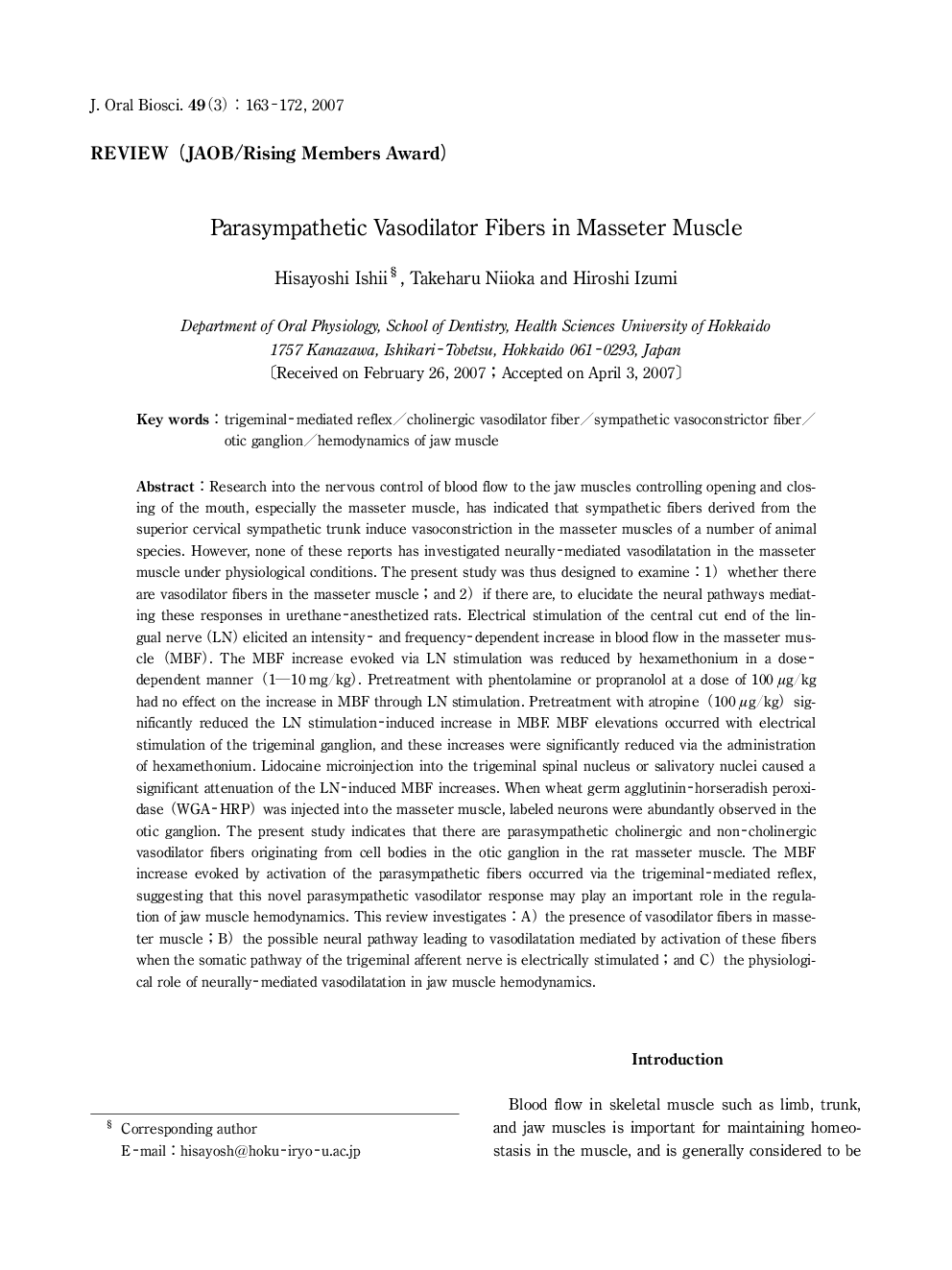| Article ID | Journal | Published Year | Pages | File Type |
|---|---|---|---|---|
| 2777092 | Journal of Oral Biosciences | 2007 | 10 Pages |
Research into the nervous control of blood flow to the jaw muscles controlling opening and closing of the mouth, especially the masseter muscle, has indicated that sympathetic fibers derived from the superior cervical sympathetic trunk induce vasoconstriction in the masseter muscles of a number of animal species. However, none of these reports has investigated neurally-mediated vasodilatation in the masseter muscle under physiological conditions. The present study was thus designed to examine: 1) whether there are vasodilator fibers in the masseter muscle ; and 2) if there are, to elucidate the neural pathways mediating these responses in urethane-anesthetized rats. Electrical stimulation of the central cut end of the lingual nerve (LN) elicited an intensity- and frequency-dependent increase in blood flow in the masseter muscle (MBF). The MBF increase evoked via LN stimulation was reduced by hexamethonium in a dosedependent manner (1–10 mg/kg). Pretreatment with phentolamine or propranolol at a dose of 100 µ/kg had no effect on the increase in MBF through LN stimulation. Pretreatment with atropine (100 µ/kg) significantly reduced the LN stimulation-induced increase in MBE MBF elevations occurred with electrical stimulation of the trigeminal ganglion, and these increases were significantly reduced via the administration of hexamethonium. Lidocaine microinjection into the trigeminal spinal nucleus or salivatory nuclei caused a significant attenuation of the LN-induced MBF increases. When wheat germ agglutinin-horseradish peroxidase (WGA-HRP) was injected into the masseter muscle, labeled neurons were abundantly observed in the otic ganglion. The present study indicates that there are parasympathetic cholinergic and non-cholinergic vasodilator fibers originating from cell bodies in the otic ganglion in the rat masseter muscle. The MBF increase evoked by activation of the parasympathetic fibers occurred via the trigeminal-mediated reflex, suggesting that this novel parasympathetic vasodilator response may play an important role in the regulation of jaw muscle hemodynamics. This review investigates: A) the presence of vasodilator fibers in masseter muscle ; B) the possible neural pathway leading to vasodilatation mediated by activation of these fibers when the somatic pathway of the trigeminal afferent nerve is electrically stimulated ; and C) the physiological role of neurally-mediated vasodilatation in jaw muscle hemodynamics.
